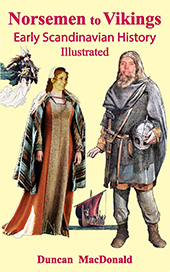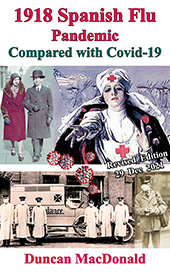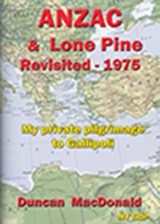Duncan MacDonald
Jakarta 14 March 2022
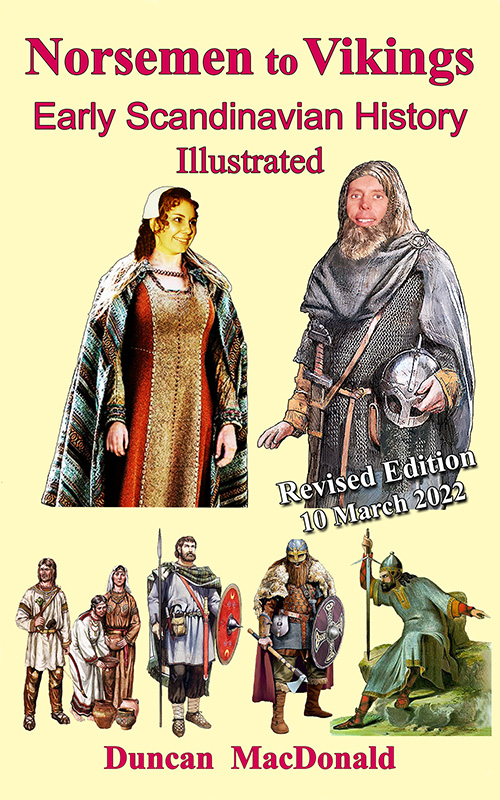
Ice Age
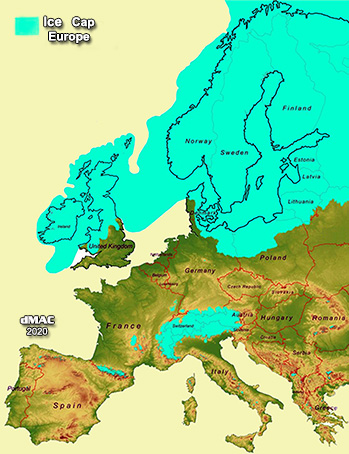
Ice Age Europe approx 9,000 BCE
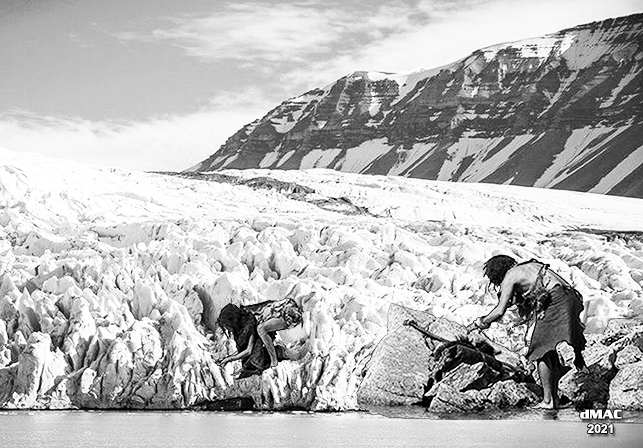
Glacier receding - Norway
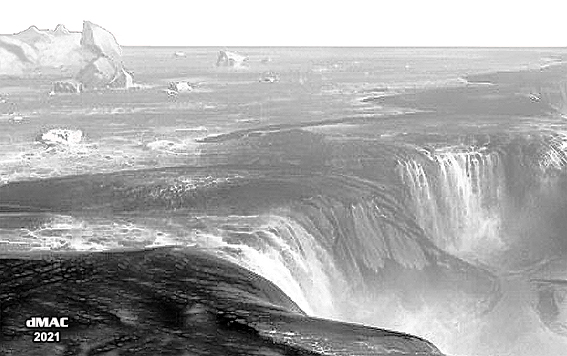
Brexit really happened 450,000 years ago
Dover and Calais were originally joined by a chalk ridge 450,000 years ago. This chalk ridge acted as a huge dam, creating the lake formed from melting water in front of North Sea ice sheets. But then the lake overflowed in huge waterfalls, eroding the rock away until it broke and released huge amounts of water into the valley below, creating the now Dover Strait.
Norse Mythology

Odin ~ regarded as the principal god of Norse mythology.
Odin is a god of war, poetry, magic and wisdom. His job was to unlock the mysteries of the universe.
In appearance he was a tall, old man, with with a flowing beard and only one eye (the other he gave in exchange for wisdom).
He was usually depicted wearing a cloak and a wide brimmed hat and carrying a spear.
Odin was described as hanging himself upside-down for nine days and nights on the cosmological tree, Yggdrasil, in order to gain knowledge of the runic alphabet which he passed on to humanity.
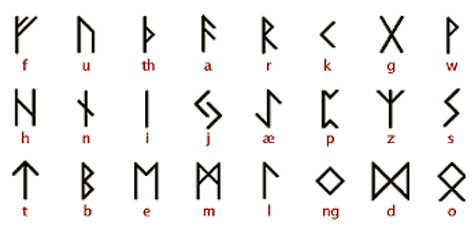
Nordic Runes
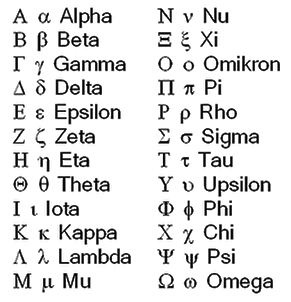
Greek alphabet
The runic alphabet was a writing system used by peoples of Scandinavia, northern Europe, Britain and Iceland from the 3rd century to the 16th or 17th century CE. Runic inscriptions were written from right to left like the earliest alphabets, thus seeming to belong to a more ancient system – perhaps from a Greek alphabet originally learned from the Phoenicians as early as the 8th century BCE.
The word alphabet comes from the Greek letters, alpha and beta.
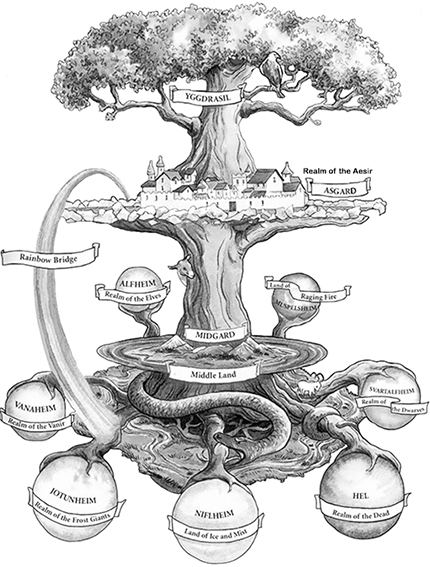
Yggdrasil – Tree of Life
The cosmos in Norse Mythology consists of Nine Worlds that flank a central sacred tree,
Yggdrasil, an immense ash tree and considered very holy. Central to it all was Midgard – the place where humans live.
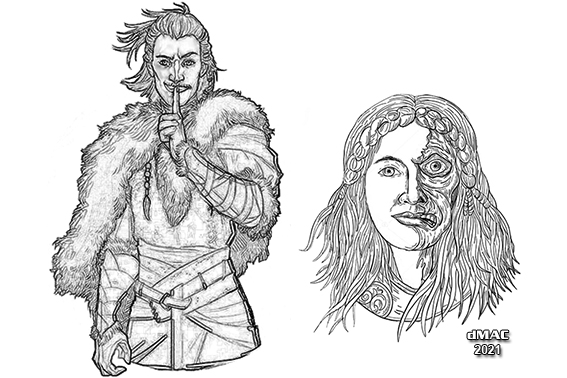
Loki, Norse god of mischief - and his daughter, Hel - goddess of the underworld
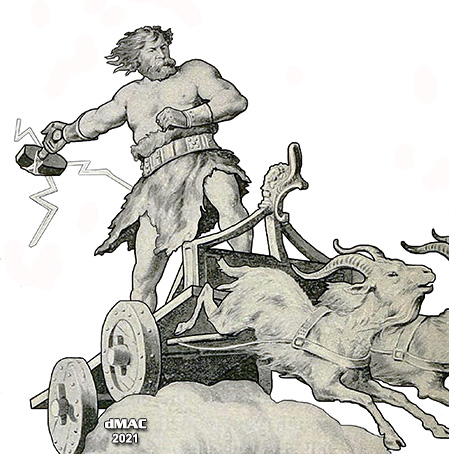
Thor is the Norse god of thunder, the sky and agriculture. He is the eldest son of Odin and became the most popular deity of the Norse pantheon. The modern English word for the 4th day of the week, Thursday, was named after him (Thor's Day)
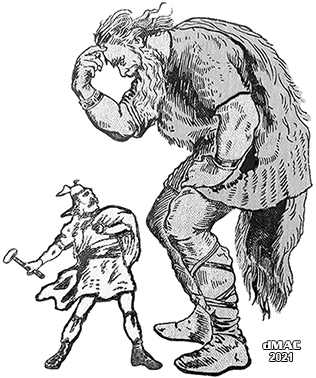
Thor and giant-king Skrymir
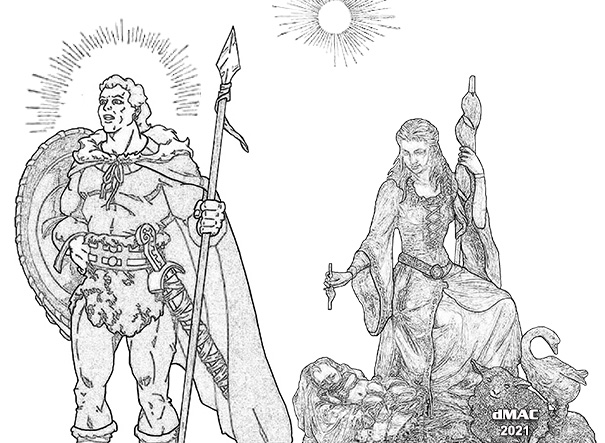
Balder the wise and gentle god of light, son of Odin, with his mother Frigga, goddess of motherhood
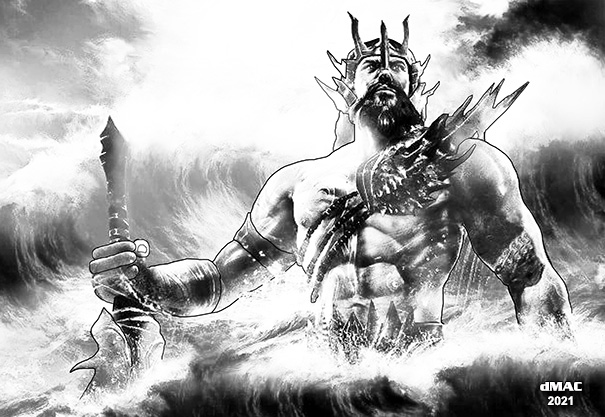 Njord, god of the sea, wind and weather
Njord, god of the sea, wind and weather 
Skadi choosing her husband
Skadi, a giantess of the Aesir tribe, went to Asgard, the home of the gods to choose a husband. She had to select her husband from any of the gods present by judging her attraction to their bared feet. The feet she chose belonged to Njord - and Skadi became his second wife.
The marriage failed because Njord preferred to live in his home by the sea, while Skadi was happier in her father's mountain dwelling place.
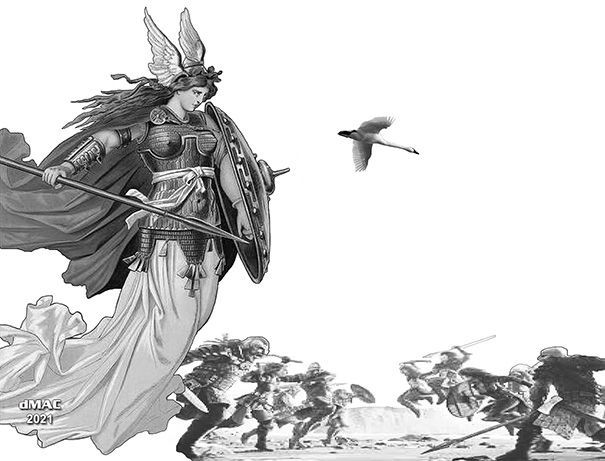
A Valkyrie watching a battle between two Norse villages
Valkyries (from Old Norse valkyrja "chooser of the slain") are female figures who select who may die in battle and those who live. Choosing among half of those who die in battle (the other half go to goddess Freyja's afterlife field, Volkvangr) the Valkyries take their chosen to the afterlife hall of the slain, Valhalla, ruled over by the god Odin. Valkyries sometimes take the shape of swans.

Valhalla, (from Old Norse Valholl "hall of the slain") is a majestic enormous hall located in Asgard, ruled over by Odin. Chosen by Valkyries, half of those who die in combat are brought to Valhalla upon death. In Valhalla the dead warriors join the masses of those who have also died in combat.

Idun, the goddess of youth, giving her Magic Apples of Immortality, to other gods.
Stone Age
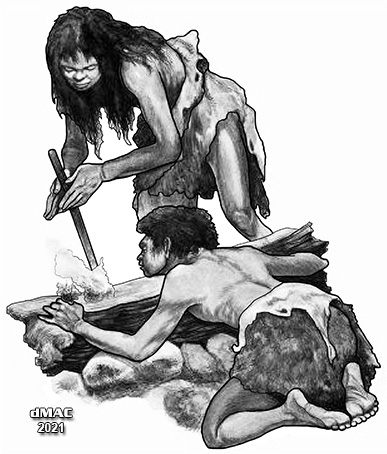
Stone Age Men Making Fire
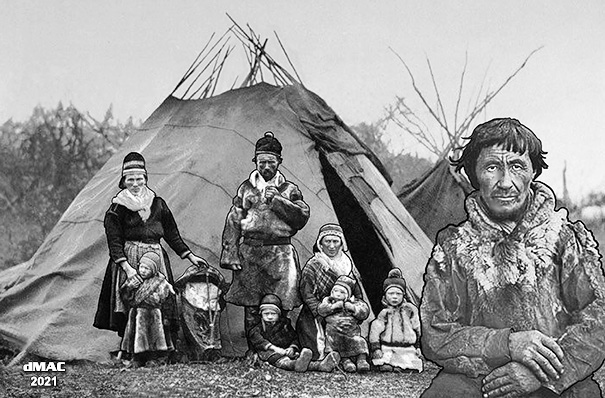
Stone Age Sami people
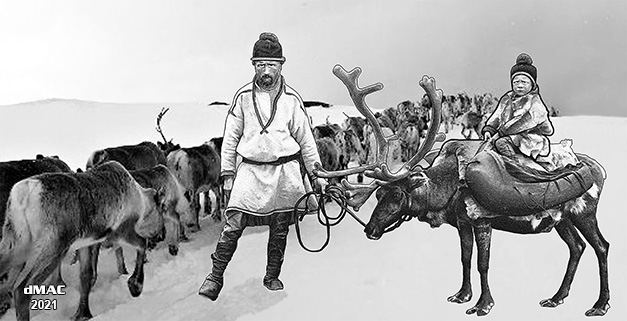 Sami herding reindeer
Sami herding reindeer Bronze Age
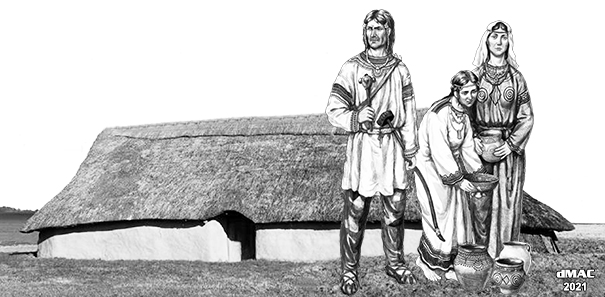
Bronze Age family in front of their home in Denmark
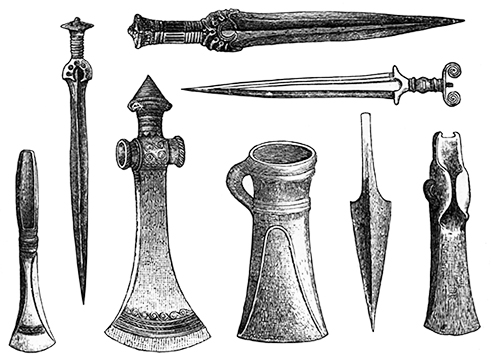
Bronze Age tools and weapons
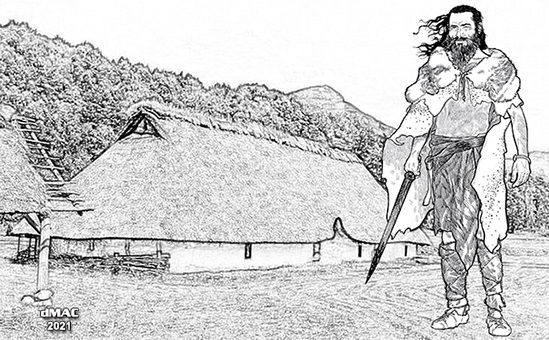
Bronze Age Nordic Karl
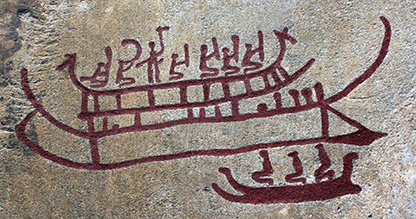
Bronze Age Rock Carving – Bohuslan, Sweden
Sandinavia has the largest amount of Bronze Age rock carvings in Europe.

Bronze Age Norse couple at their village
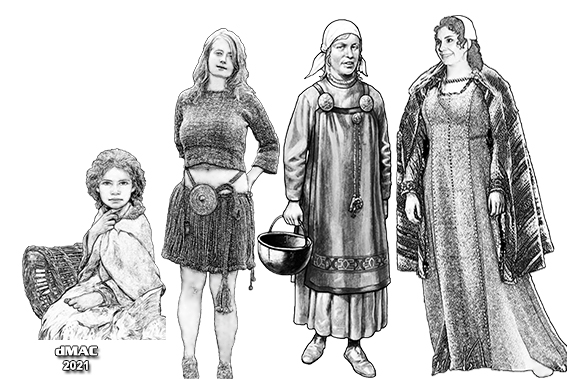
Norse Women
Stone Age Girl - Egtved Girl - Bronze Age Woman - Iron Age Woman
The Egtved girl was aged 16 years when buried in Denmark in 1370 BCE in an oak coffin.
She wore a loose woolen bodice and a short string skirt ending above her knees – this indicates she was not married.
Iron Age
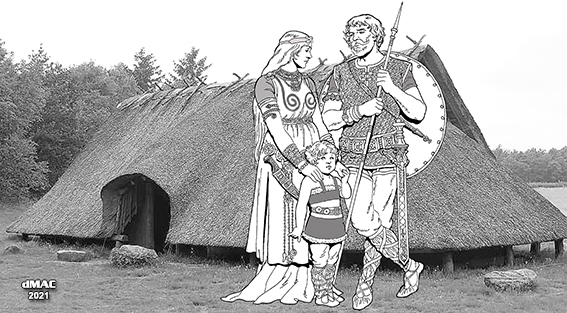
Iron Age Norse family and their farmhouse
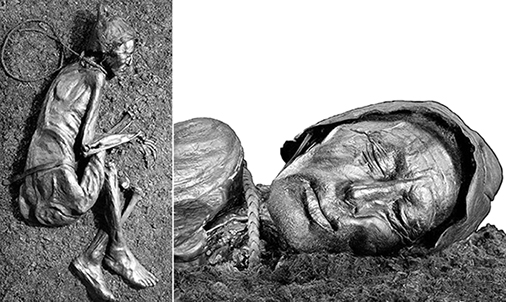
Tollund Man sacrificed 2,300 years ago in Sweden. He was 30-40 years old. The bog preserved his face but his body was reconstructed from his bones. Scandinavian Gods were hungry for sacrifice.
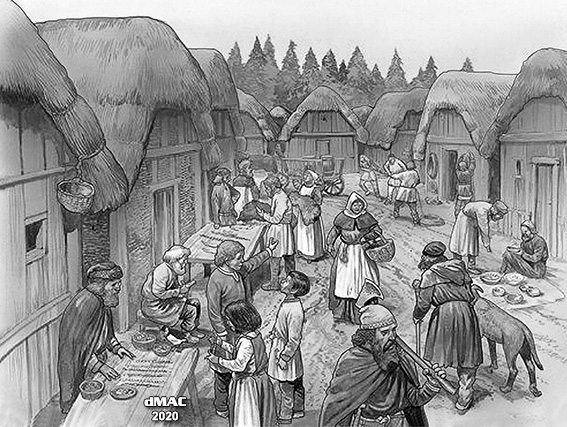
Iron Age Norse Hamlet
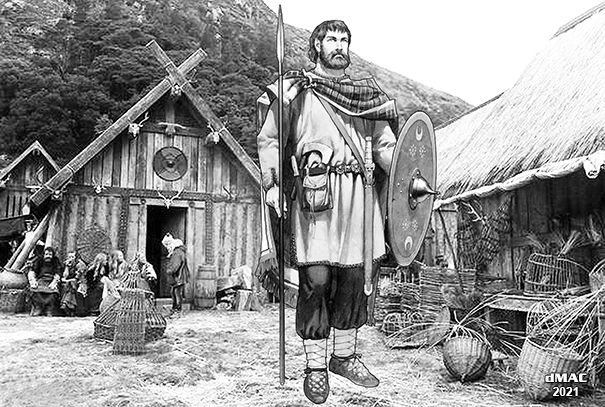
Iron Age Norse village Chief
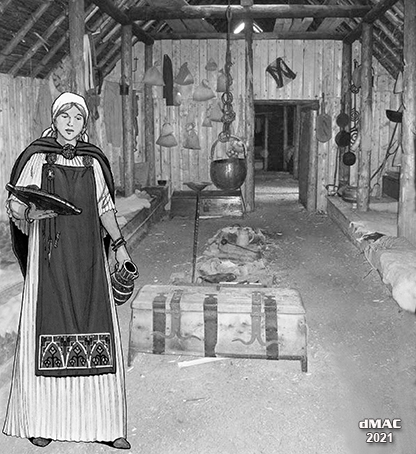
Iron Age Longhouse Woman
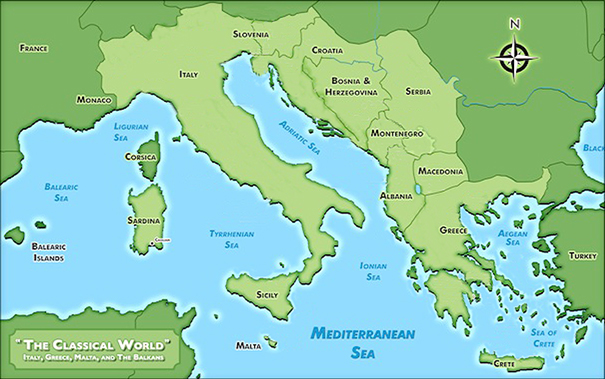
The Classical World - 8th century BCE to 6th century CE
Italy, Greece, Malta and The Balkans
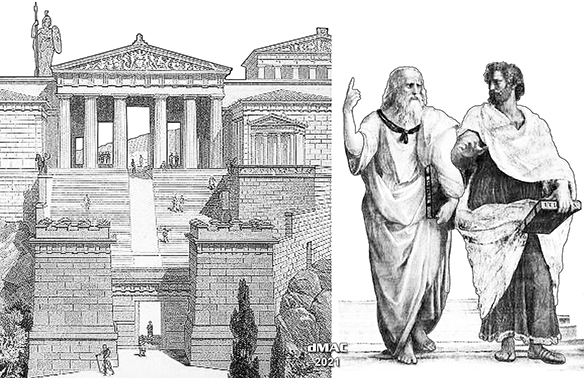
Ancient Acropolis, Athens Plato and Aristotle
Scandinavian Ships
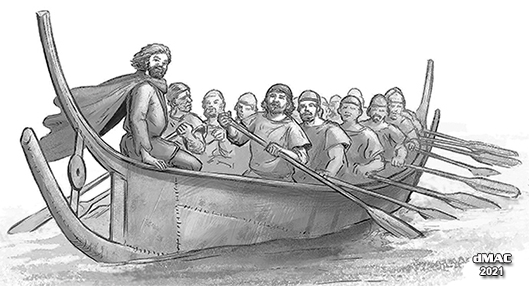
Bronze Age Hjortspring boat
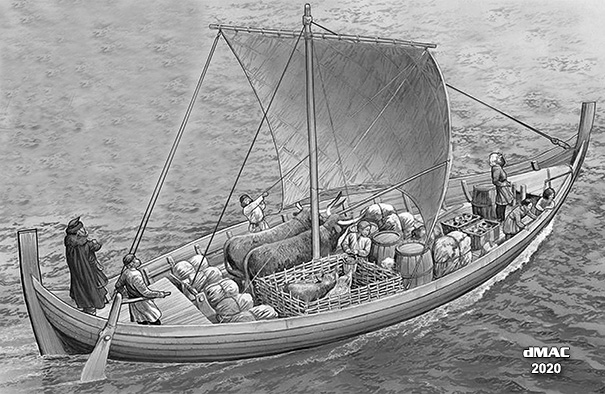
Knarr - Norse cargo ship
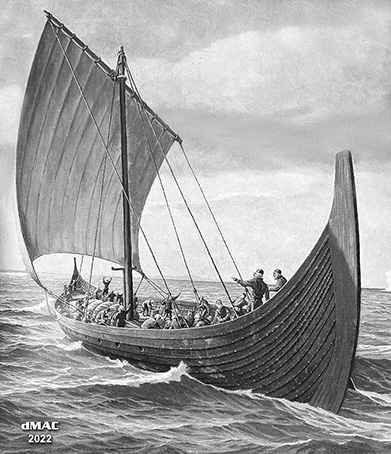
Norse Longship
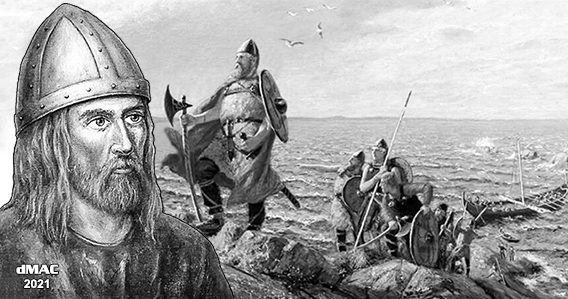
Leif Eriksson & crew landing in North America - 1002 CE
490 years before Christopher Columbus
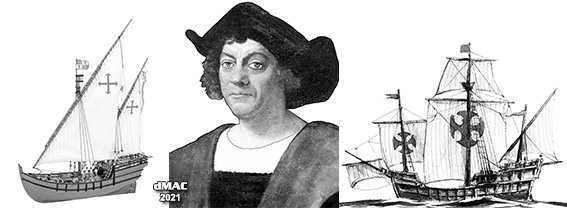
Nina ~ ~ ~ ~ Christopher Columbus ~ ~ ~ Santa Maria
landed in America 1492
Roman Empire
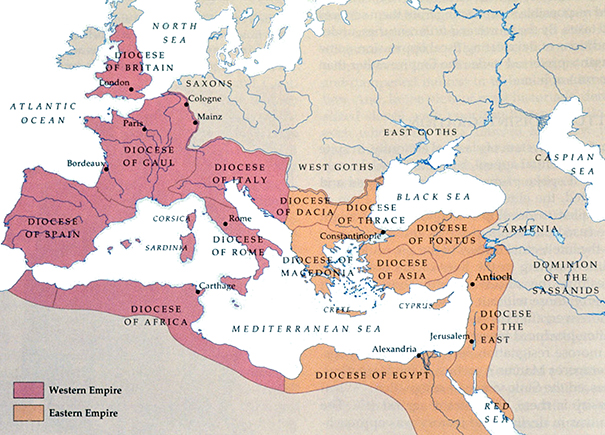
The Roman Empire - late 4th century
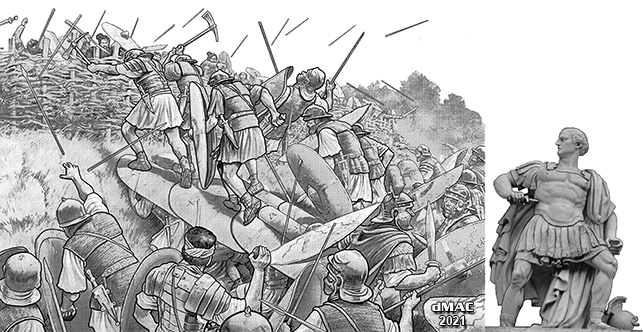
The Battle of Teutoburg Forest 9 CE
The Romans made a desperate but unsuccessful, attempt to storm the Germanic Wall.
Roman General Publius Quinctilius Varus commiting suicide.
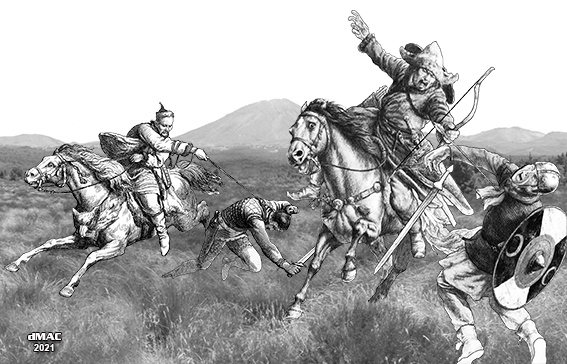
Huns attacking on horseback ~ c.430 CE
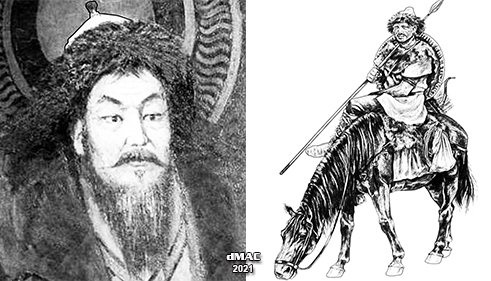
Attila the Hun ~ ~ ~ ~ ~ ~ Hun warrior

Hoby Chieftain's grave valuables - Denmark.
One of the richest Iron Age burials in Northern Europe - 1st century CE
Anglo-Saxons
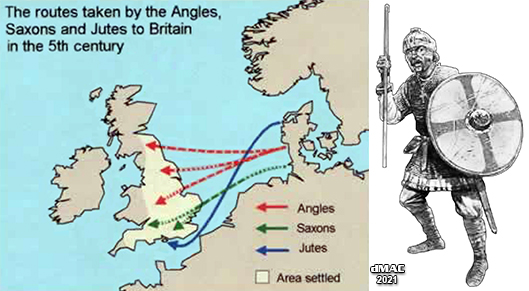
Anglo-Saxon Map and Warrior
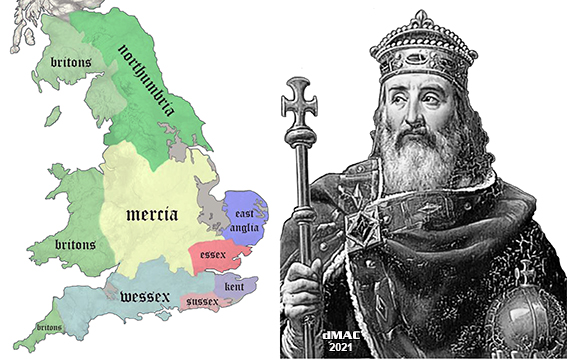
Anglo-Saxon map of Britain King Offa of Mercia
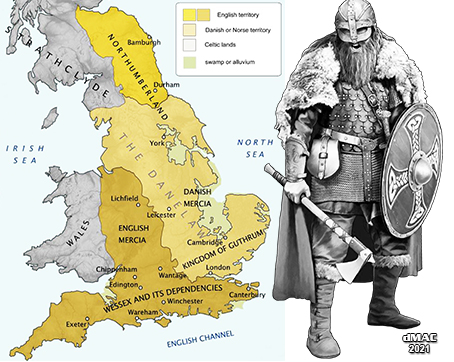
The Danelaw in England ~ Guthrum
Danish warlord Guthrum led an invasion of Anglo-Saxon England in 871. He waged war against the Wessex king, Alfred the Great, who defeated him in 878. Guthrum withdrew to East Anglia and ruled there as King from 880 until his death in in 890, from natural causes.
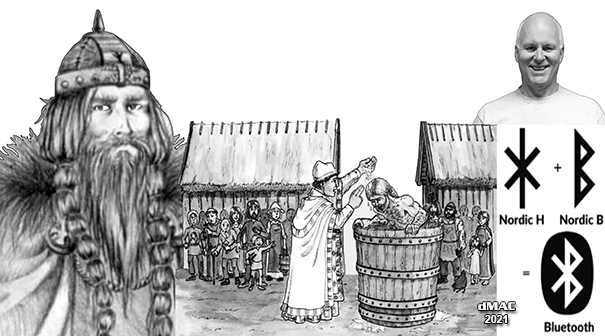
King Harald 'Bluetooth' 958 ~ Harald being baptised ~ Jim Kardash ~ Bluetooth logo
King Harald Bluetooth united Denmark and parts of Norway during his reign from 958 to 988 CE.
Jim Kardash from Intel in 1999 was quoted as saying: “King Harold Bluetooth was famous for uniting Scandinavia just as we intended to unite the PC and cellular industries with a short-range wireless link”.
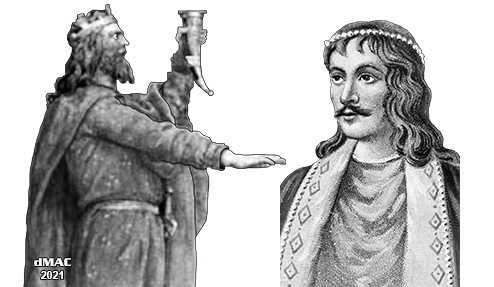
Sweyn Forkbeard Cnut the Great
Harold Bluetooth had a son, Sweyn Forkbeard, who forcibly deposed his father from his Danish throne in 986. Harald was driven into exile and died shortly after.
Sweyn for a period was king of Denmark and Norway. He led several large Viking raids against England. In 1013 Sweyn was the first Viking to be crowned King of England. He ruled only until his death in Gainsborough 3 February 1014 aged 50.
His children included Cnut the Great, also known as Canute. As a Danish prince, Cnut won the throne of England in 1016 and ruled until his death in 1035, aged around 45. He was also King of Denmark (1018 to 1035) and King of Norway (1028 to 1035).
Viking Age
 Vikings with looted treasure after attacking Lindisfarne Monastery on 8 June 793 CE
Vikings with looted treasure after attacking Lindisfarne Monastery on 8 June 793 CE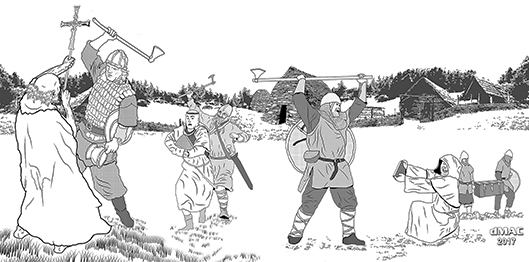
Vikings attacking Iona Monastery - 795 CE
Ireland

Viking village in Ireland Devenish Island Round Tower
The Vikings who first attacked Ireland were Norwegian, while those who attacked Britain were usually Danish. They pillaged Irish monasteries, churches, fortresses of Irish Lords and farmsteads. The Vikings found that it was very easy to ransack these vulnerable settlements. In time, the monks learned how to frustrate the Vikings, by building tall stone towers known as Round Towers. The door was placed one floor up, accessible by a ladder. Inside the tower, each floor was accessed by further ladders. If Vikings were sighted, the monks would grab as much food and valuables as they could, climb into the tower and pull up the ladder.
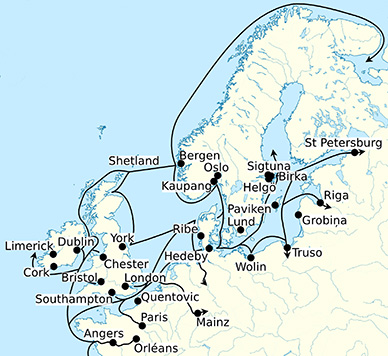
Viking Age trade routes in North Western Europe
Isle of Man
Vikings first set foot on the Isle of Man in 798 CE. By 820 they had conquered and established a thriving Viking colony, profitably engaging in the trade between Ireland and the Scottish islands.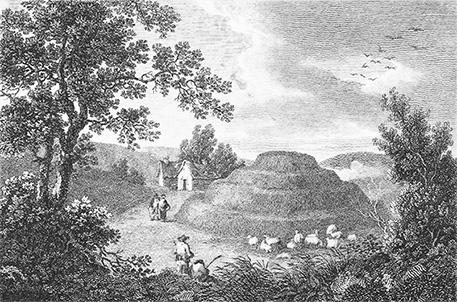
Isle of Man - Tynwald Hill - by George Cooke 1804
In 800 CE the Vikings founded Tynwald, the oldest working parliament in the world. This parliament is still in existence on the island today. Tynwald means ‘open assembly’ in old Norse. The Tynwald might have been local and regional to begin with and then later developed into one centralised assembly or government. These Tynwald’s were already in operation before the establishment of Parliamentary Government in England.

Shinta, Duncan MacDonald – Diana, Richard Gozney
Jakarta wedding reception - 2003
Note: We first met Sir Richard and his charming wife, Lady Diana Gozney, when they attended Shinta and my wedding reception, in Jakarta on 3 October 2003. At that time Richard was the British Ambassador to Indonesia. He is the former Lieutenant Governor of the Isle of Man, retired August 2021 after serving 5 years 4 months – dMAC
Scotland

Scotland - Kingdoms of the Isles and Man – End of the 11th century
Vikings colonised parts of Scotland from the 8th to the 15th centuries CE.
The Northern Isles were the first to be conquered by the Vikings – and the last to be ceded by the Norwegian crown to Scotland, in the 15th century.
In 1156 CE, despite having fewer men and resources, a Gaelic/Norse warlord, Somerled, captured ships and equipment and established a fleet of smaller ships. His galleys out-manoeuvred the Viking longboats and eradicated the Manx fleet, creating an empire that stretched from Lewis to Man.
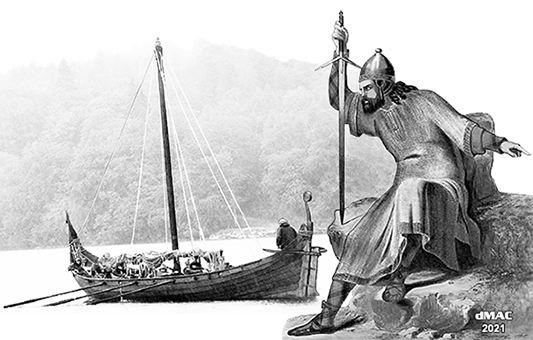
Somerled watching over one of his Birlinn galleys.
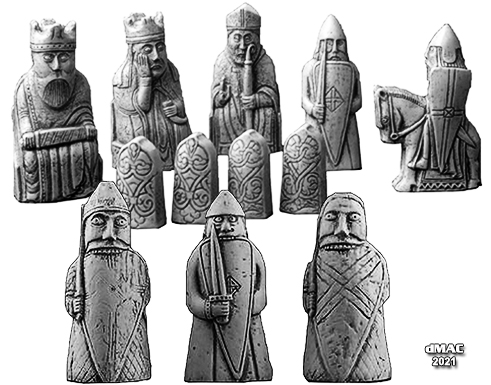
The Lewis Chessmen are the most important chess pieces in history.
They were found on the west coast of Lewis but made in Norway 1150-1200 CE. The 3 Rooks in the front row represent Viking Berserkers - they are biting their shields.
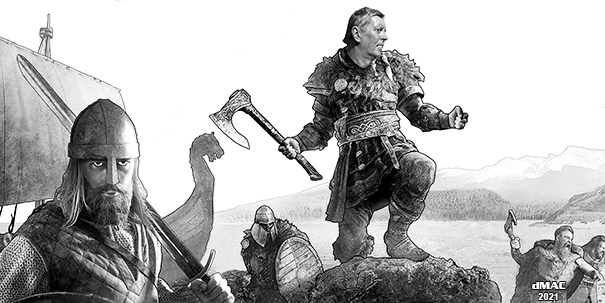
Viking Warriors
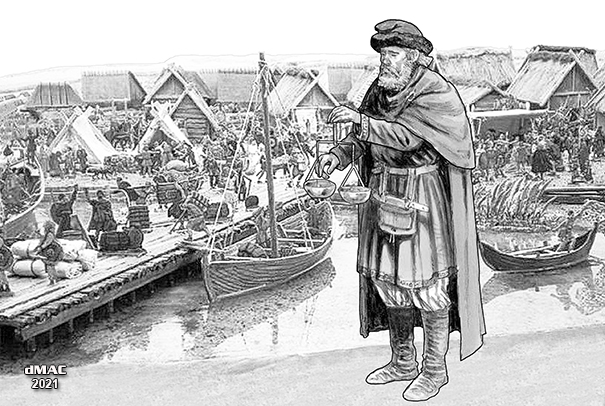
Norse Trader with scales, at Hedeby Market
Hedeby was an importaint Danish Viking Age trading settlement at the southeastern end of the Jutland Peninsular.
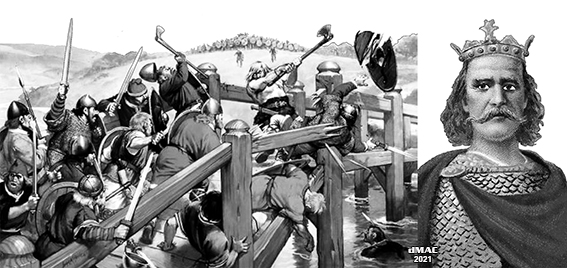
Battle of Stamford Bridge 25 September 1066 ~ King Harold II,
last crowned Anglo-Saxon king of England, defeated invading Viking army.
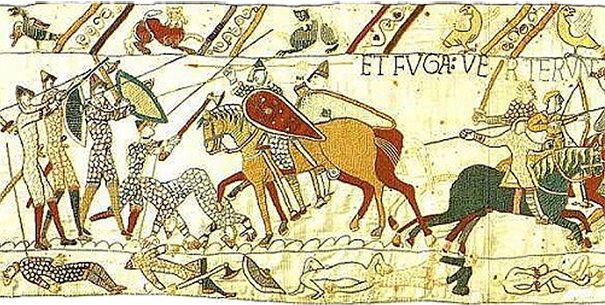
Battle of Hastings - 14 October 1066
The Bayeax Tapestry is an embroyded cloth nearly 70 meters long and 50 centimeters tall that depicts the events leading up to the Norman conquest of England, culminating in the Battle of Hastings.
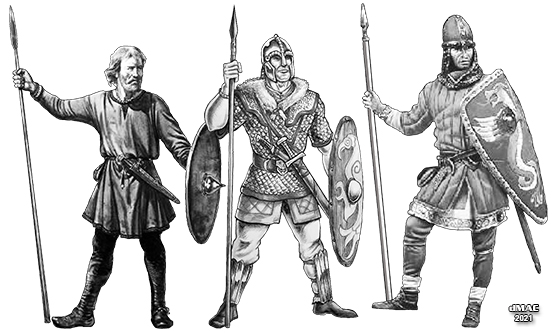
Anglo-Saxon Lord Anglo-Saxon Warrior Norman Warrior

Rollo Duke of Normandy Charles the Simple of France
 Battle of Hastings 1066
Battle of Hastings 1066 Norman Cavalry Anglo-Saxon shield wall
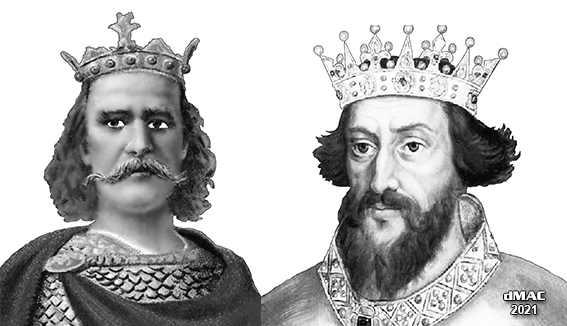
King Harold II William the Conqueror
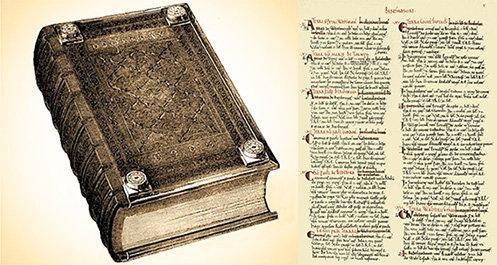
Great Domesday Book (the larger book - not the original cover) ~ Page 5 written in Latin
Post Script
Scotland’s Northern and Western Isles, and a lare part of the coastal mainland, were conquered by the Vikings in the first quarter of the 9th century. A Viking kingdom was set up there in the early 1850’s CE.
Several Scottish clans have Norse-Gaelic roots, such as Clan MacDonald, Clan MacDougal, and Clan MacLeod.
A team of researchers from Scotland and the U.K. has found, via genetic study, that many people in modern Scotland are of Norwegian descent. [Medicalxpress.com Sept 3, 2019]
The researchers suggest the reason so many people in northern Scotland have such a high degree of Norse blood is because people in those areas tended to marry locally.
Inverell History
Many of the early property owners who migrated to New South Wales, Australia, controlled the surrounding districts of what was to become Inverell. They brought with them their Presbyterian faith, Gaelic language, and Scottish customs.
Inverell was named by the district's first settler, Alexander Campbell, around 1836. Inverell is made up of two Gaelic words - "Inv" a meeting place, and "Ell" swans, - 'a meeting place of the swans'. At that time there were large numbers of swans on the Macintyre River.
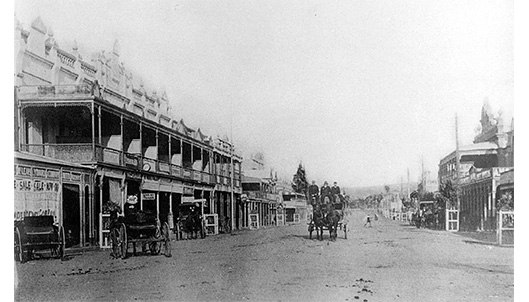
1800's Inverell Otho Street - the main street
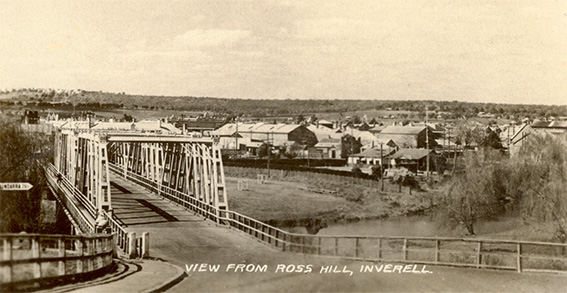
1940 Inverell, showing the bridge over the Macintyre River
Scottish Memorial Cairn - Inverell

Scottish Memorial Cairn - Inverell - St Andrews Presbyterian Church in the background
This cairn was erected by the Inverell Scottish Association and dedicated on 23 October 1999, to commemorate the contribution made by people of Scottish Ancestory to the development of Inverell and district.
The cairn's side walls provide locations whereby people of Scottish descent can record their ancestors, and later generations involved in the exploration, pioneering, early settlement, and success of the town and shire of Inverell for some 170 years. This is done by the attachment of individual Clan and/or Family Bronze plaques.

Clan MacDonald Family Bronze Plaque
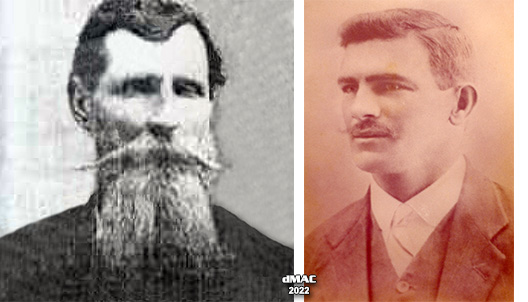
Duncan MacDonald (b 1841 Poolewe - d 1922 Goondiwindi Qld)
[right] Duncan MacDonald, son, (b 1884 Goondiwindi Qld, d 1960 Inverell NSW)
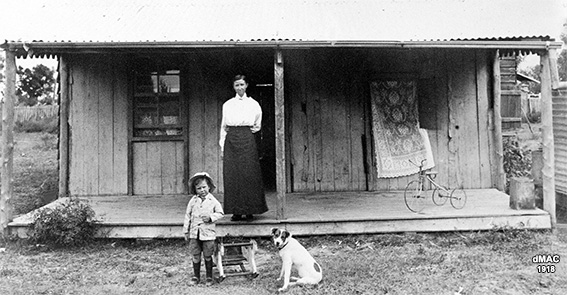
1918 Mary Nee Walsh MacDonald, and son Bruce - Goondiwindi, Queensland, Australia
Leonard 'Bruce' MacDonald, known as 'Bruce', b. 16 June 1914 Inverell - d. 9 April 1999 Inverell age 85. He was the eldest of 6 children. In June 1939 he married Laurel Nancy Nee White - b. 1917 - d. 21 August 1957 Inverell age 40 years .
Bruce was a successful businessmen, and long-term member of the Inverell Pipe Band. They are my parents
.

1947 Laurel, Bruce MacDonald, Duncan, Warwick, - Inverell Agricultural Show
[center] 1947 Laurel, Mary [Nana], Warwick, Otho St Inverell
[right] 1948 Laurel, Bruce - Scottish Ball Inverell
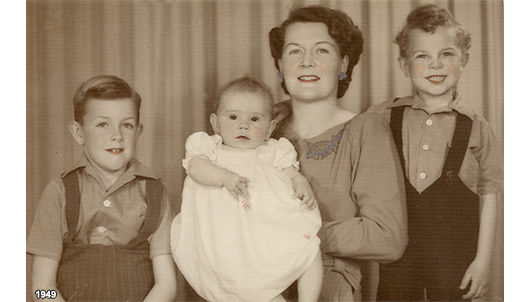
1949 Duncan, Julianne (new sister), Laurel, Warwick - studio photo
My sister Julianne, features on the the book's front cover with her husband, Peter Scott a Vietnam veteran.
Anzac Cove and Lone Pine
I met an original Anzac in 1974 in Gosford NSW, who had fought at the Battle of Lone Pine. I decided to travel to Anzac Cove and Lone Pine. The Australian Government was discouraging travel there because of the political tension between Turkey and Greece. I went anyway, solo.
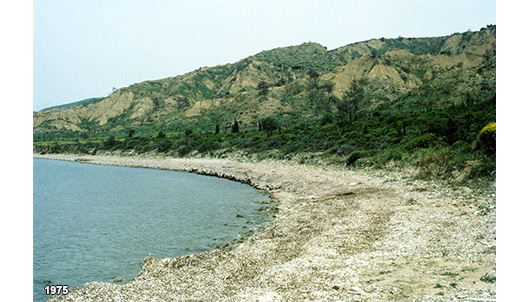
Anzac Cove 8-May-1975
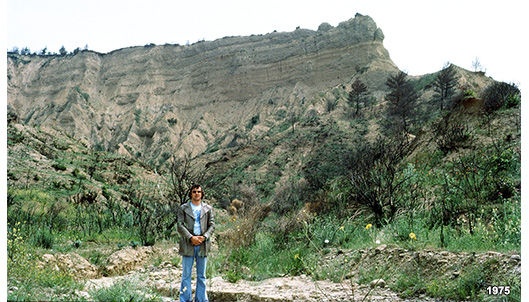
Anzac Cove - Duncan in front of Courtney and Steele Posts
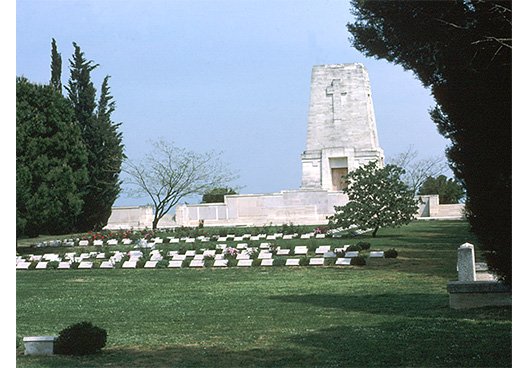
The Australian Lone Pine Memorial - 8 May 1975
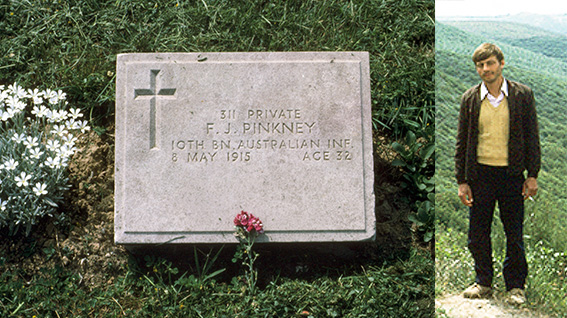
311 Private F.J. Pinkney 10th Bn. Australian Inf. 8 May 1915 Age 32. [right] My Turkish Taxi Driver
United Kingdom
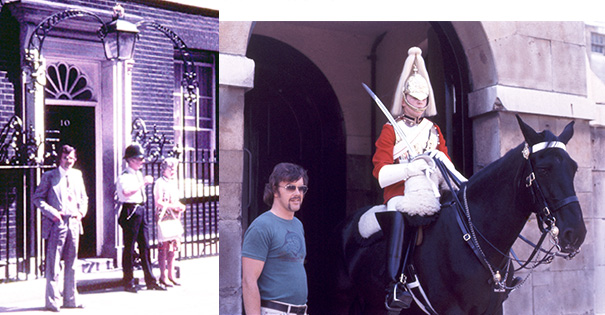
1975 06 Duncan, 10 Downing Street London - 1975 07 Duncan, Horse Guards London
After travelling through Europe on my Eurail Pass, I landed in London on 1 June 1975. I was blessed to find work with a number of English companies over the next five years. This enabled me to travel throughout England and Scotland to observe some of the more popular landmarks.

1975 0715 Duncan at Stonehenge
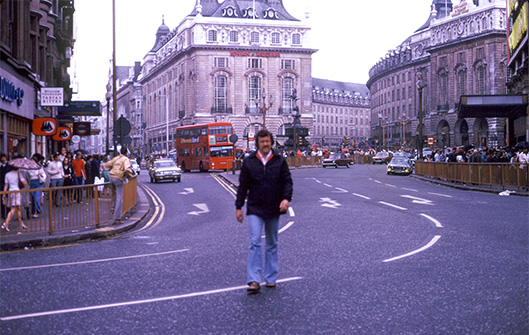
1975 0803 Duncan, Picadilly Circus London
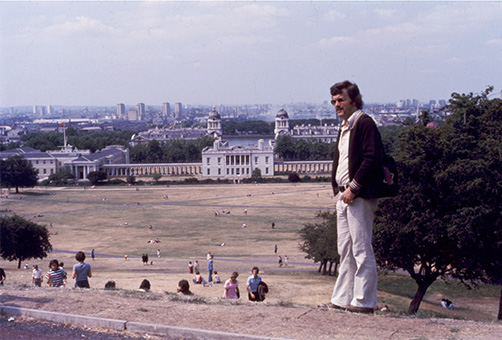
1975 0815 Duncan, Greenwich London
Visiting Scotland

1976 0421 Duncan, Firth of Forth rail bridge, Edinburgh
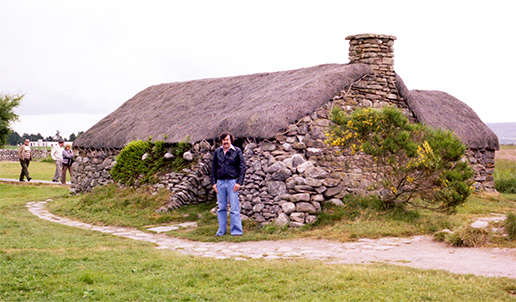
1976 0710 Duncan, Crofters cottage near Culloden
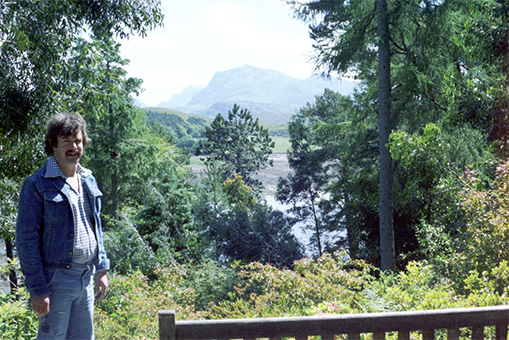
1977 0711 Duncan, Inverewe Garden
I was delighted to see an Australian eucalyptus tree, on my visit to Inverewe Garden.
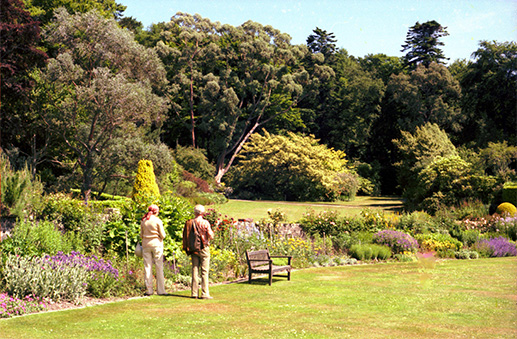
1977 0711 Inverewe Garden
Poolewe
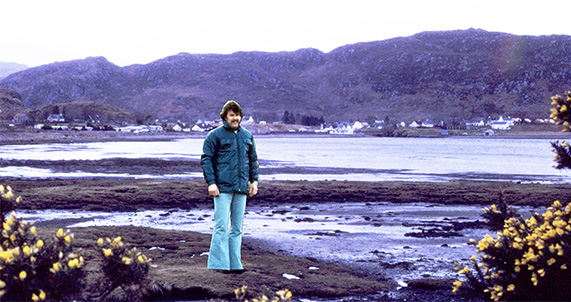
1977 0712 Duncan visiting Poolewe
From Inverewe Garden I went south to reach my ultimate goal: Poolewe.
Poolewe is a small village in Wester Ross in the North West Highlands of Scotland, about 75 miles [120 km] northwest of Inverness, by Loch Ewe. It is about one mile from Inverewe Garden.

1977 0712 Duncan, Poolewe graveyard - MacDonald headstone
My visit to Poolewe cemetery in 1977, confirmed that there were MacDonalds' living (and dying) in Poolewe 200 years ago.
My quest to confirm if I have any Norse blood remains unanswered, but looking back over their history of conquering other tribes and countries: I hope - if I have any, it has only caused me to travel extensively, and develop a passion for history.

